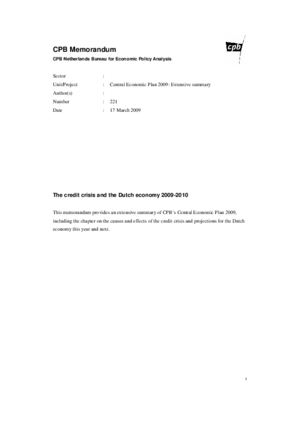The credit crisis and the Dutch economy 2009-2010
The credit crisis has plunged the world economy into the deepest recession since World War II. In the second half of 2008, the credit crisis infected the rest of the economy in the Netherlands.
The prospects for 2009 and 2010 have deteriorated in record time as a result of the collapse of the world economy and world trade. Because the number of job vacancies is still high and average purchasing power is rising relatively strongly, 2009 will not be experienced as a crisis year by everyone. Unemployment is rising rapidly however. The government finances have been thrown off balance: the surpluses on the budget estimated earlier have disappeared entirely from view and government finances are facing greater challenges for the long term as well. This calls for thorough analysis of the underlying causes and the effects.
The current recession is of an entirely different nature from the one at the beginning of the nineteen eighties. Low profits and lack of incentives were the problems at that time. Now we are dealing with speculative bubbles resulting from a surplus of savings on the one hand and poor regulation and supervision on banking systems which failed to keep pace with financial innovation, on the other. This combination of macro and microeconomic factors led to the current crisis.
The crisis could have substantial long-term effects on the level of prosperity.
